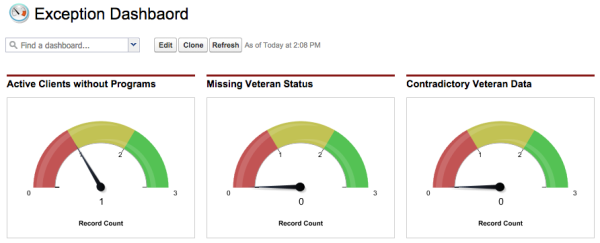In the world of CRM, data isn’t just king—it’s the whole kingdom. But it’s not just about having data. It’s about having the right data—and knowing when something isn’t right.
That’s where exception reports come in.
What Are Exception Reports?
Exception reports highlight what’s missing, what’s broken, or what’s out of bounds. They don’t just show you what’s working—they alert you to what’s not. Think of them as a spotlight on the cracks in your data foundation:
- Opportunities with no next steps
- Cases that haven’t been updated in 14+ days
- Contacts missing critical fields
- Deals closed without products attached
- Service Appointments with no End Date
Each of these issues, if left unchecked, chips away at productivity, pipeline visibility, and trust in your CRM.
The Hidden Cost of Missing Exceptions
Without exception reports, issues stay buried until they cause real damage. Let’s look at where that damage shows up:
1. Wasted Time
Your team spends hours chasing the wrong leads, re-entering data, or fixing errors that could’ve been prevented.
2. Inaccurate Forecasts
If your pipeline is filled with stale or incomplete records, your revenue projections are pure fiction.
3. Compliance Risks
Missing legal or contractual data can put your business at risk. Exception reports can help flag these issues before they become liabilities.
4. Broken Processes
Without visibility into what’s falling through the cracks, it’s nearly impossible to improve your workflows or coach your team effectively.
5. Loss of Executive Trust
When leadership gets burned by bad data once, they stop relying on dashboards—and that’s a long road to recover from.
What Should You Track with Exception Reports?
Every org is different, but here are some core exception reports that can be lifesavers:
- Cases with no status updates past SLA
- Accounts missing industry or type fields
- Leads without contact info or source attribution
- Users not logging in (license waste!)
The Bottom Line
A good exception report doesn’t just point fingers—it points you in the right direction.
When your team has clear visibility into what’s broken, they can fix it fast. When they don’t? Small issues become big problems. Lost revenue. Broken customer experiences. Missed growth targets.
So ask yourself: Is your CRM catching what’s falling through the cracks?
If not, it’s time to build exception reports that work as hard as your team does.




